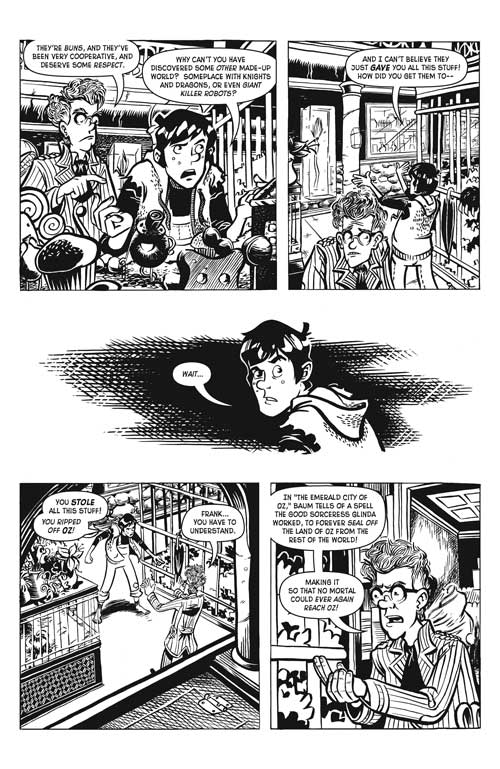Bandes Dessinées 3
Multiple Genre Medium
European comics have an extensive selection of science fiction titles. I have already mentioned Enrico Marni's Gipsy. American advocates of comics as the 9th art make a big deal of comics being a medium not a genre. Super heroes are a genre that have become exclusively linked with comics. In fact, the two largest comic book publishers hold a joint trademark on the term. Comic book stores are such a stange market, the are served by only one distribution company. So you can go over Diamond Comic Distributors and confirm that over seven out of every ten comics sold in comic shops is a super hero book. In 2011, all but about a dozen mostly horror titles of the top 500 best selling comics of 2011 were super hero books. I should note that the graphic novel/trade paperback list is much broader and those books are also sold by book stores that do not report numbers to Diamond. The French comic book scene is far more diverse, and even though only a small fraction of those have been translated into English it still expands our market here in the U.S.A.
I picked up The Metabarons: Poet and Killer and The Metabarons: Alpha / Omega by Jodorowsky, Gimenez, Charest and Moebius. I can make some observation about the series even after skipping over the second volume of these editions. There seems to be a few things lost in translation, this is a problem because language in SF can be strange without translation. Jodorowsky has worn a lot of hats over his lifetime. On top of being a renowned comic book writer he is also a prose writer, occultist and film maker. Before doing The Incal and its prequel The Metabarons he spent about half a decade trying to bring Frank Herbert's Dune to screen. You can see how much of Herbert rubs off on this work. It is epic and while it is slightly silly it is strangely Shakespearean. You can find copies directly from Humanoids, the English language publisher.
 |
| A page from Ortibal |
So I read, Orbital: Vol. 1 Scars by Serge Pelle and Sylvain Runberg. Runberg has a good running start at an epic space opera but there just isn't enough in the first volume for me to make a judgment. Serge Pelle art is amazing and the translation is very readable. The entire series is available in print and English amazon.com. This is becuse of this intresting company called Cinebook. This U.K. company is actively trying to bring high art comics across the English Channel. You find their catalogue at cinebook.com, but prices are listed in pounds.
Last but not least, my final finds were VALERIAN spatiotemporal agent: Ambassador of the Shadows & VALERIAN spatiotemporal agent: World Wthout Stars by Jean-Claude Mezieres & Pierre Christin. From the 1970, VALERIAN & LUARELINE appears to be giant among the shelves of the Bandes Dessinées. I should mention that allot of the dust jacket info highlights the connection to and influence on Star Wars. What is more telling for me is the list of creators that praise it: Will Eisner, Harvey Kurtzman and Jim Steranko all heavy hitters in and out of mainstream comics. The praise for these first two volumes of VALERIAN spatiotemporal agent is understandable. It really does feel like George Lucas partnered with Wally Wood to create a big sand box of a space opera. The publisher, Dargaud International, is a division of its French publisher. I found out that I can get ahold of the French editions here in Austin so I will return to these after I run out of English translation with Bandes Dessinées 4(or possibly 5): Enki Bilal. Before that I will be returning to some self published work.


